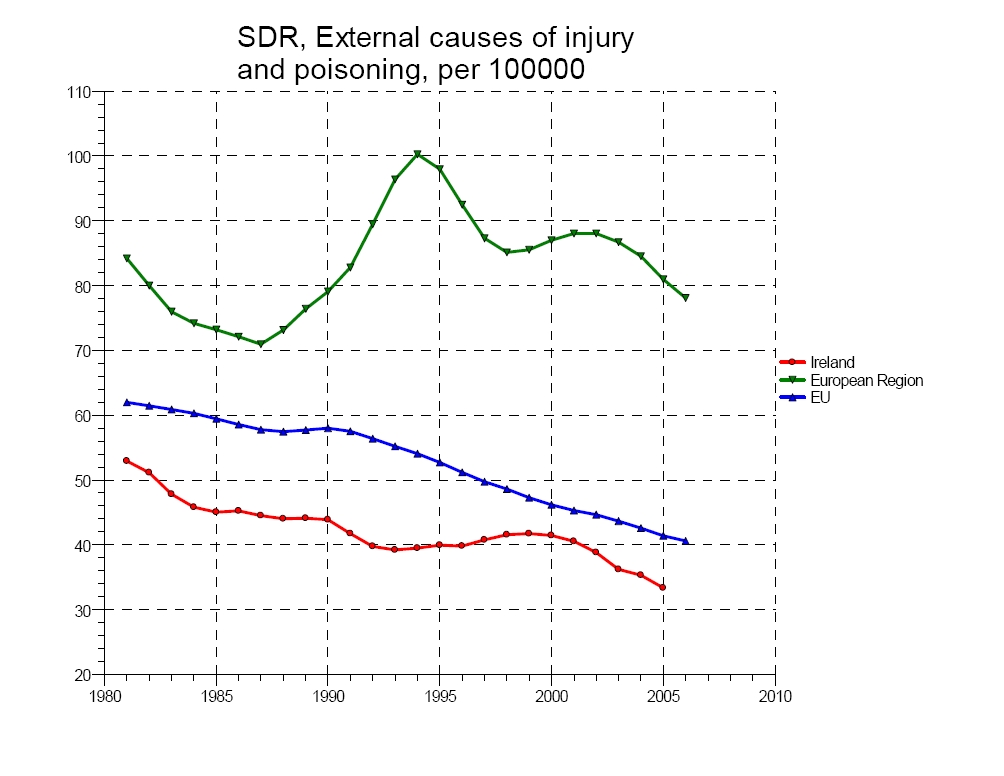The State that we are in
“Irish self-fascination is not productive and contributes to extremes in sentiment – hubris during the tiger year when Ireland knew best and self-loathing now as some believe the country is worst for everything. The truth is that all countries are unique. There is nothing uniquely unique about Ireland.”
Dan O’Brien – Ireland, Europe and the World
The State that we are in:
We live in a benign country. Our weather is moderate, if damp. Year after year, regardless of the efforts we make, the sun fails to give us heat stroke. The last time we had a hurricane was January 5th 1839. An oiche gaoithe mór was an event so rare that it was used to determine whether a person was eligible for the five shillings pension that the British introduced in 1909. If you were old enough to remember the night of the big wind, then you were old enough to draw down the pension.
Our rain, while incessant, fails to be monsoon-like. Our rivers flood in an almost apologetic manner, they fail to rage torrentially, they rarely tear buildings asunder, and if they go about annihilating villages like their Andean cousins, well they don’t like to talk about it.
Spring does not bring us the drowning horror of the mudslide. Our summers do not sear the soil. Each autumn, brush fires do not threaten our homes. In winter, we do lot live under the terror of the thunder of an avalanche.
In Ireland we have few, if any hazards. Our most dangerous wild animal is the bumble bee. Getting on the wrong side of a bad heifer is far more likely than shark attack.
The only force of nature that we seem vulnerable to, is gravity.
Not only are we safe, we are safer than almost everywhere else. We are less likely to die in an accident than our European neighbours. According to the World Health Organisation’s 2009 country assessment[1], our roads are safer than the rest of the continent, we are less likely to die in a fire, be poisoned, drown or be killed by another person than our fellow citizens of the European Union.
Source: WHO 2009 [2]
Our children are less likely to be killed than is the European norm.
Even when we consider alcohol abuse, our people died from alcohol poisoning at a quarter of the European rate. And if we can extrapolate directly from the coroner’s data[3] even our death rate by alcoholic liver disease was only half the EU rate.
Despite the apocalyptic descriptions the HSE hospitals that accompany any discussion of health in Ireland, life expectancy at birth is higher than the European Region average, for males and for females. This is neither new nor unexpected; there was a downward trend in injury mortality rates the 1980s, a leveling off and a slight increase in the 1990s, and again a downward trend in the 2000s. Our birth rates are higher than the European average, our death rates lower, our mothers have a lower child birth mortality rate.
Our leading cause of unintentional injury-related death is falling.
The vast majority of us can expect to die of an age related illness complicated by life style issues, which we never got around to sorting out.
We are safe.
We are also relatively crime free. As the CSO states in their Quarterly National Survey “In 2010, 9% of all households experienced property crime. This was a reduction from 12% and 11% in 2003 and 2006 respectively. There was a fall in the rate of personal crime experienced by those aged 18 years and over in 2010 (4%) when compared with 2006 (5%).” Fear of crime has also been in decline, 40% of people worry about being a victim of crime, this is down from 58% in 2003.
Despite this more than four out of five people believe that crime in Ireland is a serious, or a very serious problem. Almost two thirds of people feel personally safe from crime. Three quarters of people feel safe walking home, alone, after dark. But there is an overwhelming belief that crime is getting increasingly out of hand.
Both the CSO[4] and the National Crime Council[5] agree that we have low rates of crime. Fortunately we have also lower rates of fear of crime than the Scots, the Welsh, the English and the Irish of Northern Ireland. Fear of crime has a particularly debilitating social cost as it leads to avoidance behavior and social isolation. And is an unnecessary social cost, like other countries, those who are most likely to fear crime; rural people, the aged, and the widowed are those who are least likely to experience crime. The typical victim of crime is the young, urban male, he is rarer than is European peer, and generally he doesn’t let it bother him.
What Dan O’Brien calls “The myth of lawless Irish… [our] self-image that [we are] a nation of inveterate rule breakers” is essentially untrue. We have a sense that our country, outside of our neighborhood, beyond the experience of our friends and family is a much more unpleasant place than it really is.
[1] Progress in the prevention of injuries in the WHO European Region – Ireland, WHO 2009
[4] “Crime and Victimisation” Quarterly National Household Survey
Central Statistics Office 2010 http://www.cso.ie/releasespublications/documents/crime_justice/current/crimeandvictimisation_qnhs2010.pdf
[5] “Fear of Crime in Ireland and its Impact on Quality of Life”
A Report Commissioned by the National Crime Council and published by the Department of Justice, Equality and Law Reform April, 2009 http://www.justice.ie/en/JELR/Fear%20of%20Crime%20in%20Ireland.pdf/Files/Fear%20of%20Crime%20in%20Ireland.pdf


